How might we help children invent for social good?
What surviving an attack from a man-eating tiger has taught me about invention and rural entrepreneurship
I stayed in a tribal village in India for a year teaching children leadership skills through design thinking. Here’s a story behind my non-profit initiative and how we’ve impacted 1200+ children from 3 rural areas (also a short segway in which I was chased by a man-eating tiger)
Can children invent for social good?
We expect kids to do kids-related work, but what if they stepped up as leaders and gave back to their community? This was the guiding question behind this social initiative.
As an impact initiative, we followed the open innovation framework for structuring our work. Systemic change does indeed take time. 1-2-3 or even 5-10 years to have something tangible. Most of the social innovations got stuck at prototype/scaling stage which we wanted to avoid.

I stayed with the locals in the tribal village of Maharashtra, India to understand the context. To bond with the villagers, I actively involved as a teacher, helped with the jaggery production and rice harvesting. The day ended with copious notes from all the observations.

Lobhi village was quite remote and secluded. Lying amidst a thick forest belt often frequented by leopards and tigers. This is a picture that I took while being chased by one of these man-eating tigers which visited our village during summertime (yes, I live to tell this story)
While working with rural children closely, I was baffled by their creativity. Less was more!
They build upon innovative ideas using fewer resources. They played with flowers, fruits, clay and even dried leaves. The play didn’t require plastic toys or some fancy 3D printers

Yet, at the same time, their creativity was underutilized. 70 percent of India’s workforce resided in rural areas but only 20% of the graduates were workforce ready. The ethnography studies led to the formulation of our social initiative.

2+ years of experimentation in the form of pilots in rural schools helped us to carve out this program. We aimed at providing leadership skills through design thinking. The program was divided into three phases (unconditioning, critical thinking & design thinking)

Why design? Because design is not just about making cute little drawings, but so much more. You could think about problems critically and solve them. We believed in the vision of nurturing such young changemakers through design.
As a product of the traditional educational system, you had to do a lot of ‘unlearning’ to look at problems differently and to tackle them. The first phase of our program did exactly that. Letting your mind unlearn, and to let your creativity juices to flow more freely.

We also observed a lot of students getting stuck with creative block to build and explore. So we designed various challenges to create an enriched visual library of mechanisms, structures, materials and applied science/maths for the kids
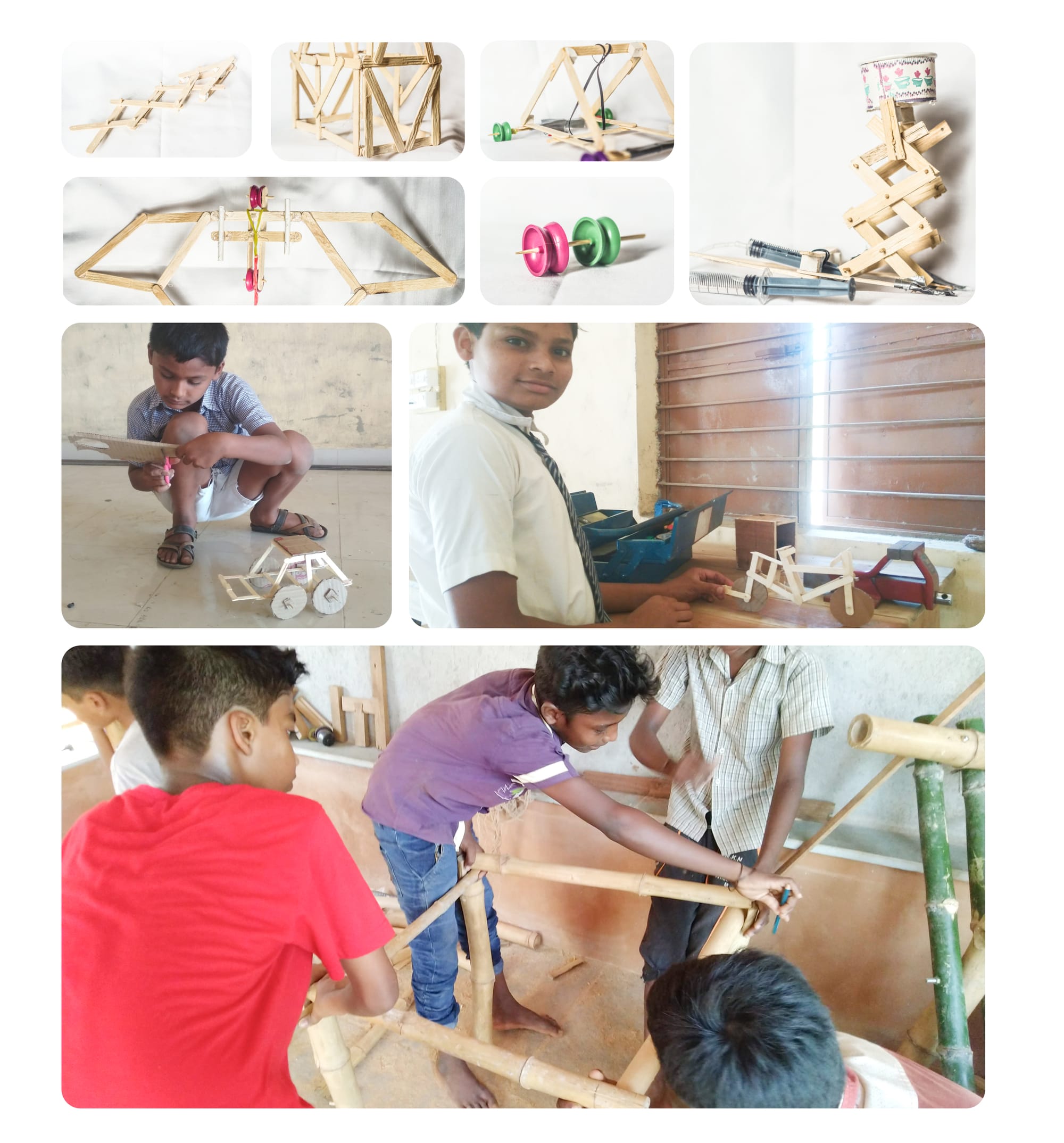
This is one such example from an activity which we designed. The challenge was to build a bridge that could hold their own weight using popsicle sticks
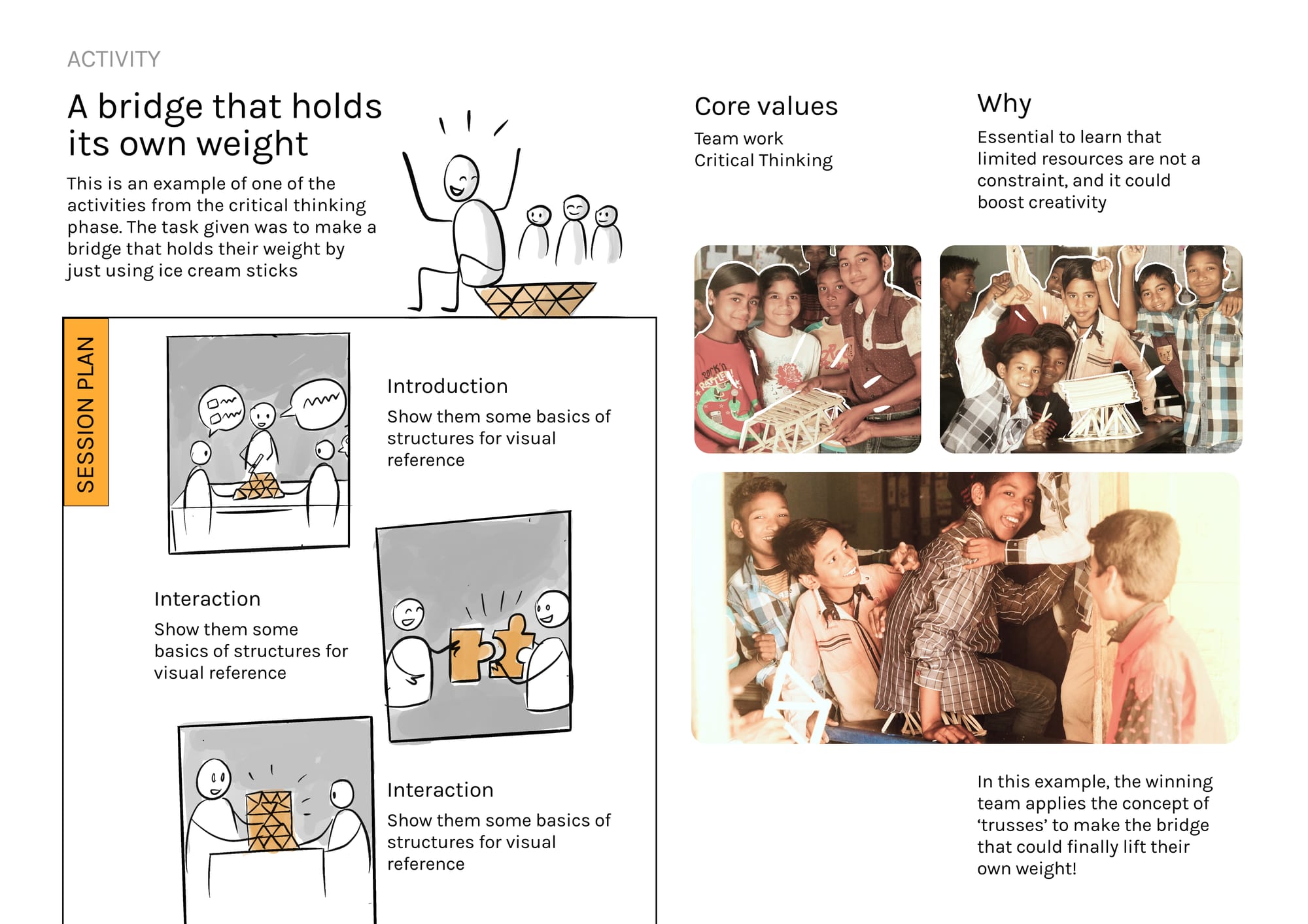
This is another such example from the design thinking phase. The students were asked to go for nature walks and document their observations. In this manner, the core values of observation, empathy and team work were reinforced among our children.

The vision was focused towards building self-reliant student leaders from the community. The OECD Learning Framework 2030 was followed to make sure that the knowledge, skills and values were aligned through our curriculum.

The tap (money) shouldn’t run dry, even if it is for a good cause. So we systematically injected funds through external grant agencies and crowdfunding support. The financial capital was leveraged along with social capital (media, mentors, hackathons) to scale impact.
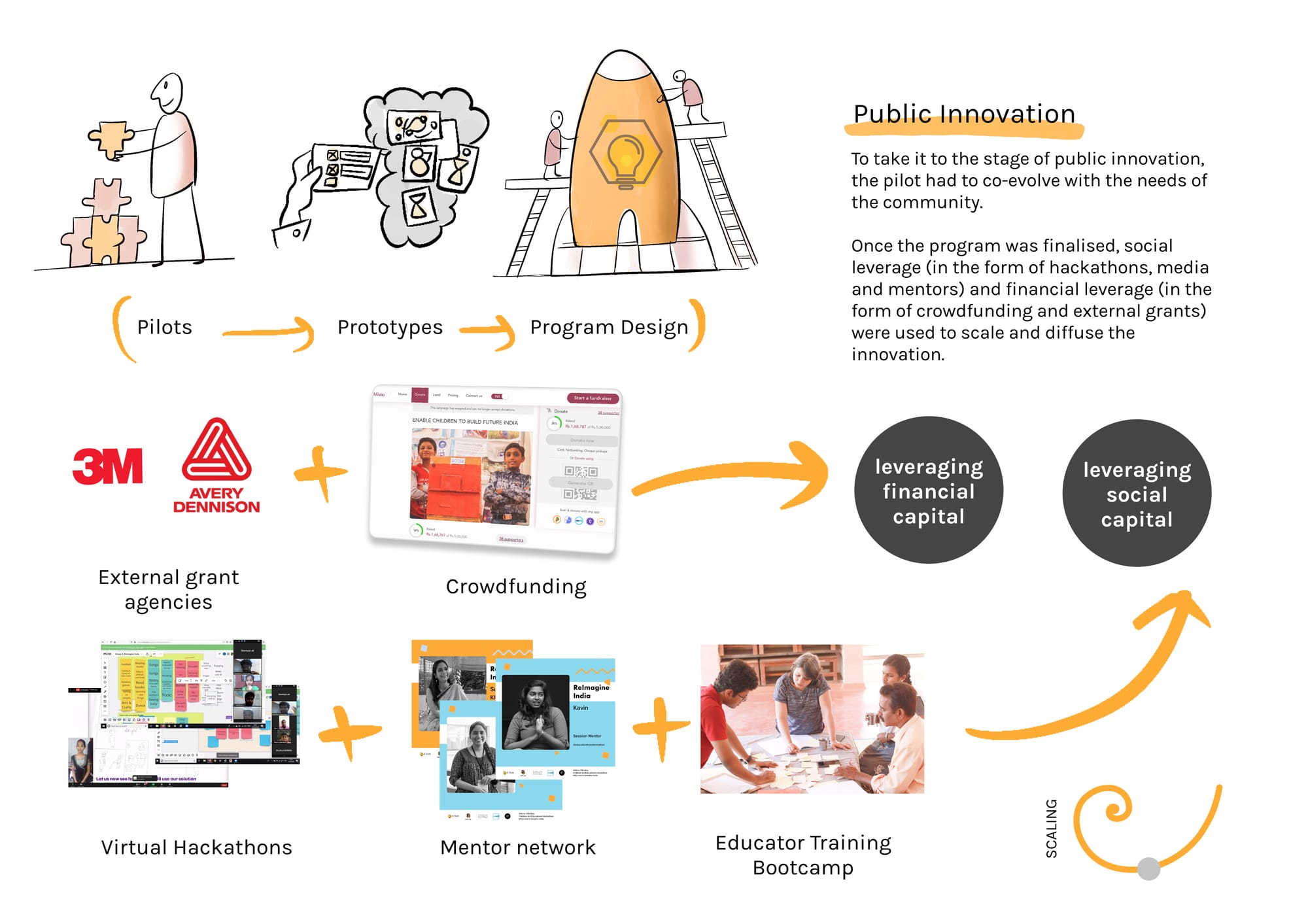
Will take you through some examples which I personally consider as a ‘systemic change’ for the communities.
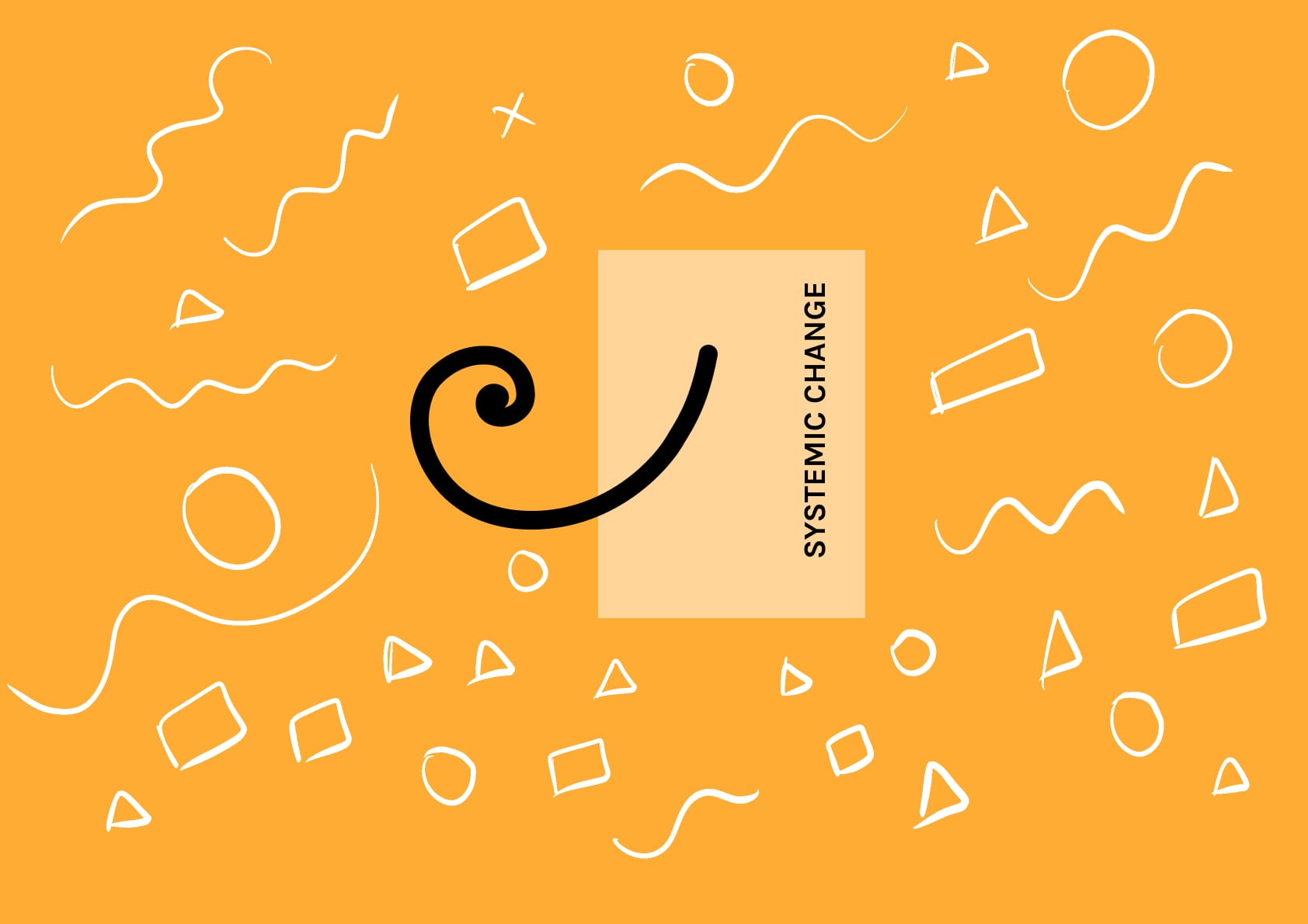
Our students build 12+ innovations over the course of time. The beauty of these innovations were the simplicity and resourcefulness and the ‘jugaad’ (frugal mindset). Local solutions developed locally by the locals
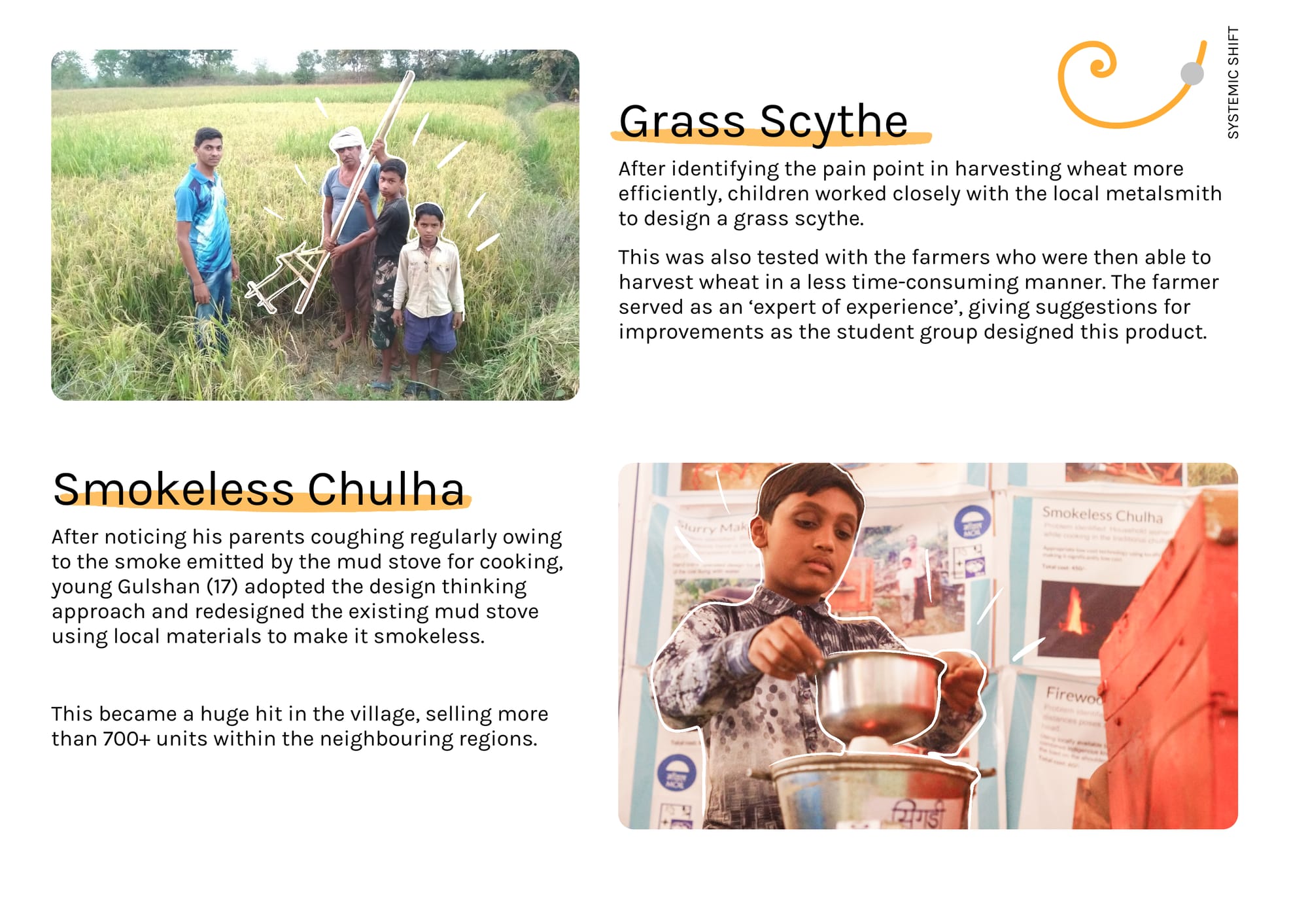
Among the innovations included a pole climber (risk free climbing of poles by electricians), smokeless chulha (smoke-free mud stove), grass scythe (for wheat harvesting), leaf plate machine (local production of sustainable leaf based plates) etc
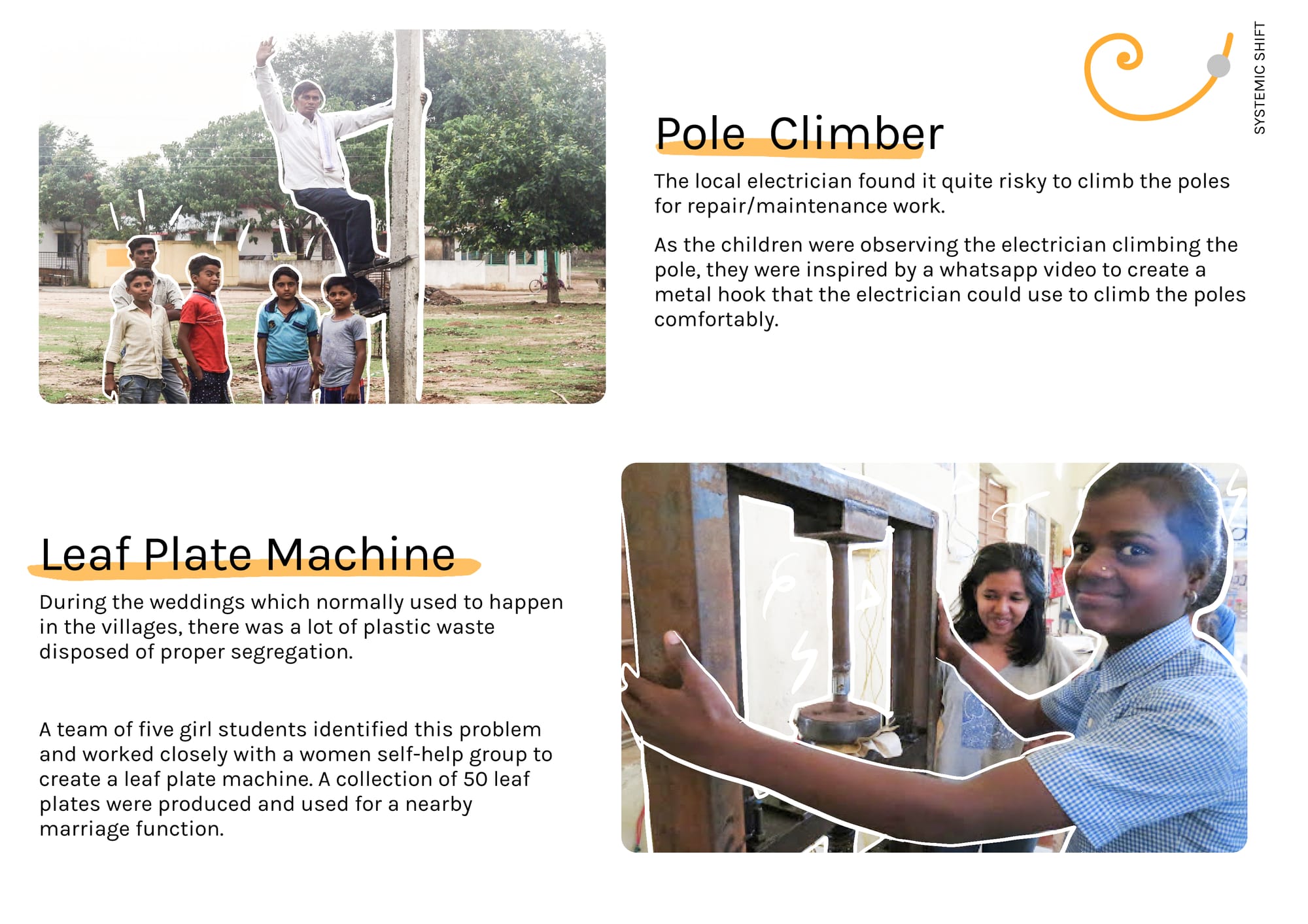
Firewood carrier: Helping farmers transport firewood through a bamboo based carrier. Slurry Maker: Clog-free slurry for biogas plants intended for cooking. The kids went through the design thinking process and developed these innovations
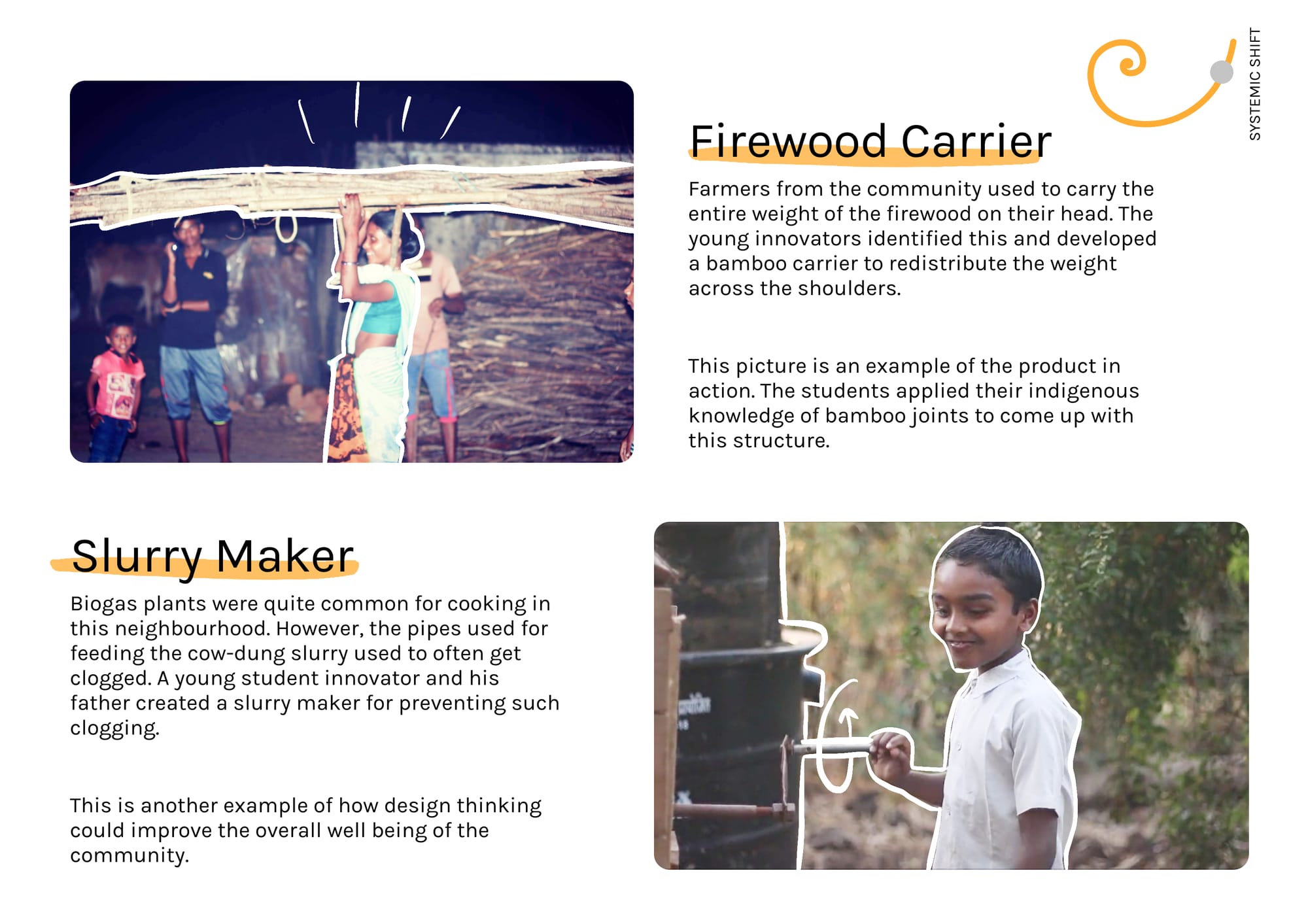
After seven months of lobbying, a one-of-a-kind children-led makerspace was established!
This provided the students with a platform for expressing their creativity. The students also actively involved with the community (farmers, artisans etc) and co-created solutions with them
A couple of our student innovators also got scholarships and were award recipients for their impact work. All these observations were published as a book titled ‘Rural Design Toolkit’. This was meant to encourage all our young grassroots innovators :)
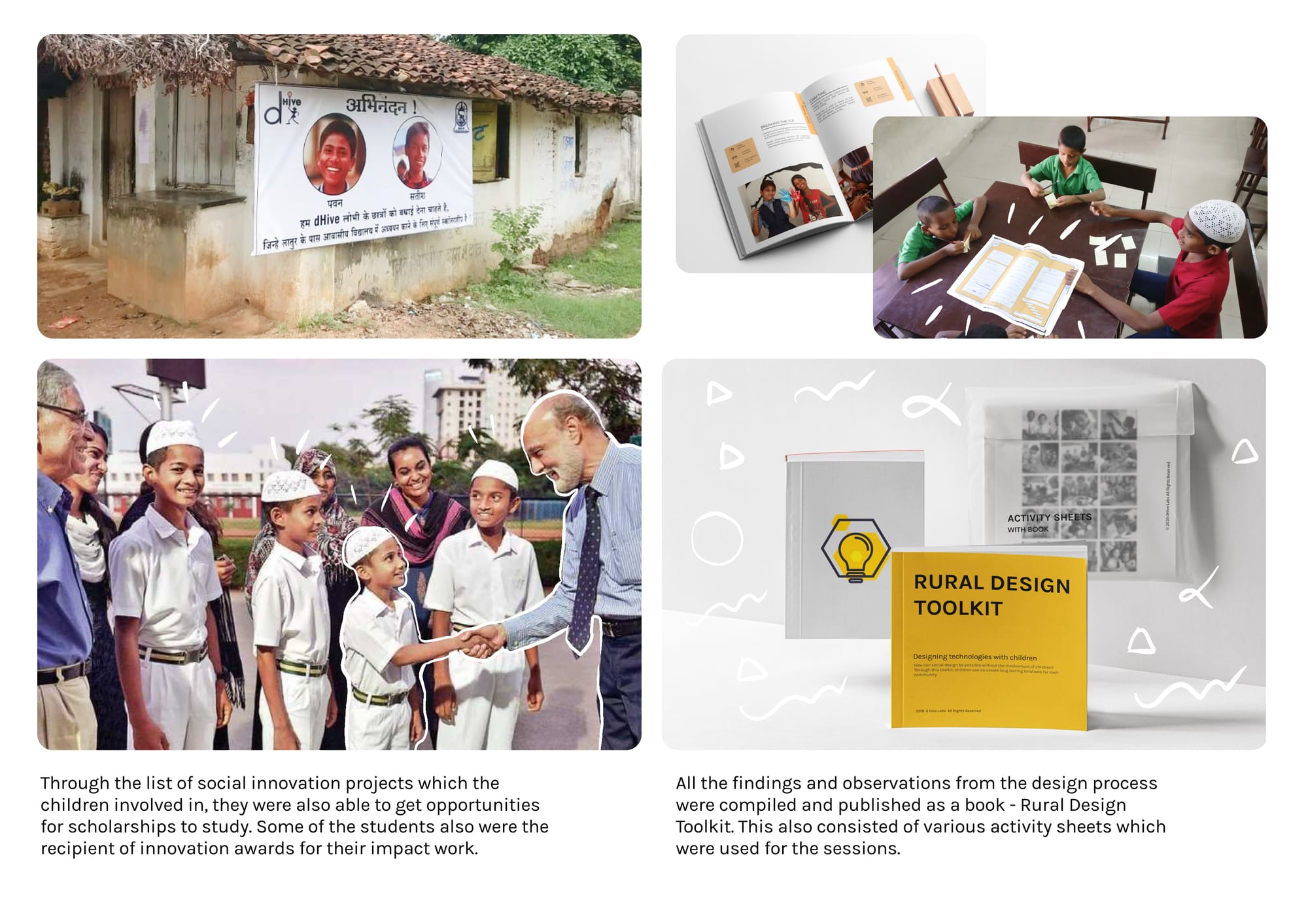
One of the innovations (smokeless chulha) also achieved significant maturity for taking it forward in terms of production. A group of 8 women members formed a team and were trained by the student innovator to take it forward as a social enterprise.
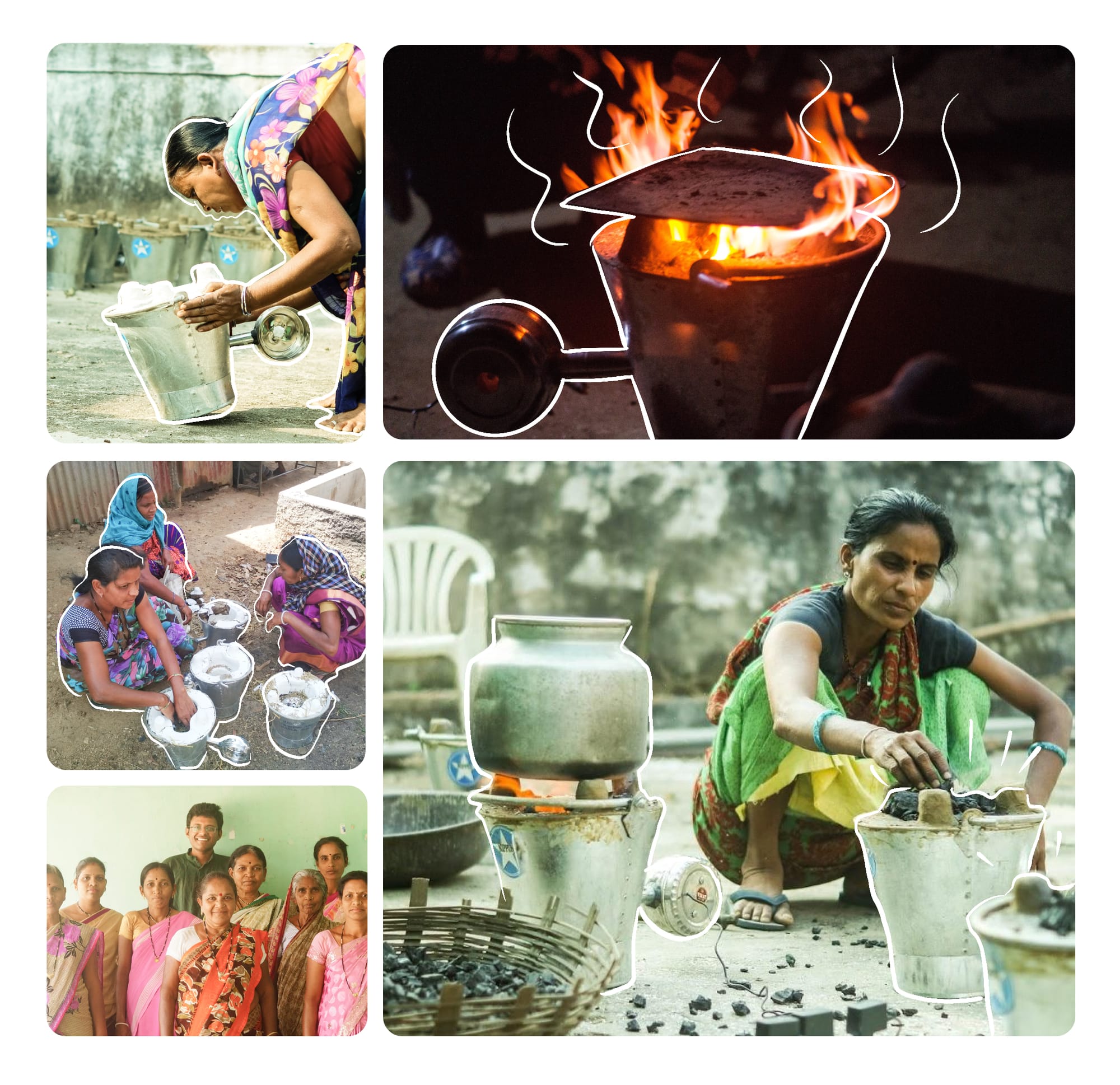
The systemic shift is still quite a hefty word. More than the innovations and the enterprises formed, the mindset shift which we observed is what we are the proudest of. From ‘What can the government do for us?’ to ‘What can we do for the community?’